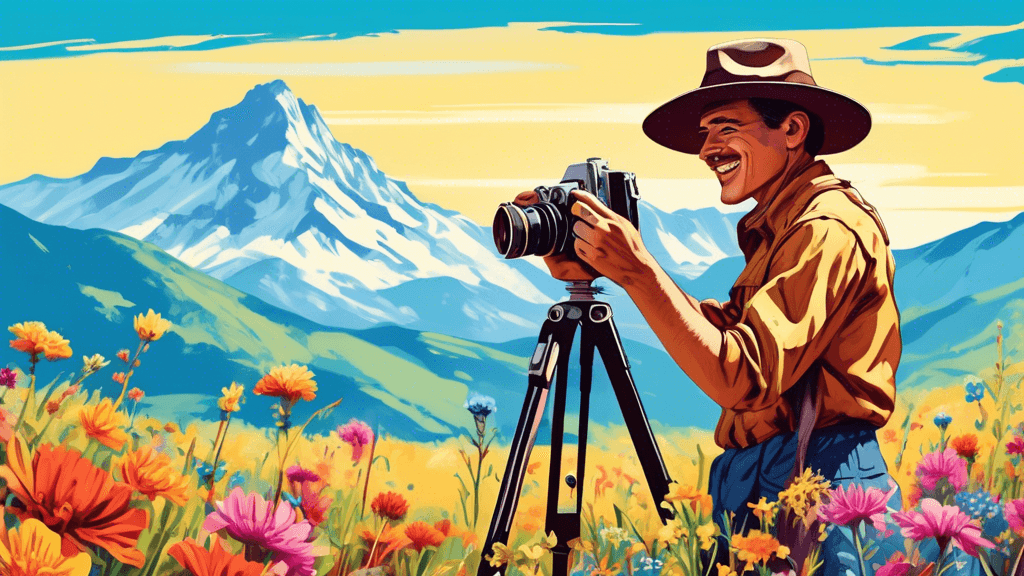
Capturing Nature: Tips for Outdoor Photography
Share
Introduction
Are you passionate about capturing the breathtaking beauty of the natural world through your camera lens? Outdoor photography not only provides a chance to connect with nature but also offers endless opportunities to document the earth's stunning diversity. In this blog, we'll explore essential tips that every photographer, whether novice or professional, should know to enhance their outdoor photography skills.
Understand the Basics of Outdoor Lighting
The golden hour—that magical time just after sunrise or before sunset—offers soft, diffuse light which can add a magical quality to your photos. But how can you make the most of this fleeting time? Here’s a prompt to consider: How might changing your angle of light enhance your subject? Experimenting with shadows and the light's direction can add depth and drama to your frames.
Mastering Composition Techniques
Understanding the rule of thirds can transform your photographs from good to great. Place your subject at the intersection points of the grid lines that divide the image into thirds, both horizontally and vertically, to achieve a well-balanced composition. Wondering how else you can bring balance to your composition? Try integrating leading lines—a path, a river, or even a ray of light—that guide the viewer's eye through the photograph.
Using Natural Elements to Frame Your Subject
Incorporating natural elements like trees, archways, or windows can frame your main subject and focus the viewer’s attention exactly where you want it. This technique not only enhances the subject but also adds depth to the photo.
Choosing the Right Equipment
When venturing into outdoor photography, the right gear can make a big difference. Here are a few essentials:
- A Durable Camera Bag: Protects your equipment from the elements.
- Lenses: A wide-angle lens for landscapes and a telephoto lens for wildlife.
- Tripod: Essential for stability in uneven terrains and long-exposure shots.
- Filters: Such as polarizers to enhance the sky and mitigate reflections, or ND filters to control light in bright conditions.
Considering the unpredictable nature of outdoor photography, what could be some strategies to keep your equipment safe and functional in various weather conditions? Simple measures like keeping silica gel sachets in your camera bag, or using rain covers, can protect your gear.
Understanding Natural Habitats and Behavior
To truly capture wildlife, a deep understanding of the animal's behavior and its habitat is crucial. Wildlife photographer and conservationist, John Smith, states, Observing from a distance with minimal interference not only ensures your safety but also preserves the natural behavior of the animals, leading to more authentic photographs.
Think about how the knowledge of an animal's peak activity times could affect your shot. Early morning might be the best time to capture images of birds chirping, while dusk could be ideal for mammals who are beginning their nocturnal activities.
Patience and Persistence
Outdoor photography requires an abundance of patience. Sometimes, you might spend hours waiting for the perfect light or for a wildlife subject to appear. How can maintaining a quiet presence and a patient mind enhance your photography experience? It allows you to blend into the surroundings and become a part of the natural setting, which often results in unexpectedly wonderful photographic opportunities.
Post-Processing Techniques
Post-processing is a powerful tool that can subtly enhance the beauty of your outdoor photographs. Adjusting exposure, contrast, and saturation can help in bringing out the details and colors of a landscape exactly as you remember seeing it. As renowned photographer Ansel Adams famously said, You don’t take a photograph, you make it. This emphasizes the artist's role in creating the final image through thoughtful editing.
Conclusion: Joining Art with Environmental Conservation
Lastly, as photographers, we wield the power to influence and inspire others toward environmental preservation through the images we capture. How can your photography practice contribute to environmental awareness and appreciation? Sharing images that highlight the beauty and fragility of natural environments can mobilize public sentiment towards conservation efforts.
Incorporating these outdoor photography tips can immensely improve your skills and allow you to capture nature in its most authentic form. Happy shooting, and don't forget: every picture you take is an opportunity to make a difference for our planet.





